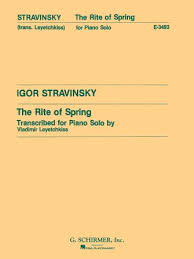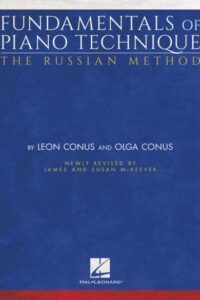Table of Contents
Come join us now, and enjoy playing your beloved music and browse through great scores of every level and styles!
Can’t find the songbook you’re looking for? Please, email us at: sheetmusiclibrarypdf@gmail.com We’d like to help you!
Stravinsky The Rite of Spring Le Sacre du printemps piano solo sheet music, Noten, partitura, 楽譜, 乐谱

Best Sheet Music download from our Library.
Browse in the Library:
Or browse in the categories menus & download the Library Catalog PDF:

Please, subscribe to our Library.
If you are already a subscriber, please, check our NEW SCORES’ page every month for new sheet music. THANK YOU!

The Rite of Spring: A Primal Scream That Shattered Music and Reshaped the 20th Century
Igor Stravinsky‘s Le Sacre du printemps (The Rite of Spring) is not merely a ballet score; it is a seismic event in cultural history, a primal scream that shattered the conventions of Western art music and irrevocably altered the trajectory of the 20th century. Premiered amidst chaos in Paris on May 29, 1913, its raw energy, rhythmic violence, harmonic audacity, and thematic brutality remain potent and challenging over a century later.
I. Genesis and Infamous Premiere: A Theatrical Riot
- Commission: The visionary impresario Sergei Diaghilev, leader of the Ballets Russes, commissioned Stravinsky after the successes of The Firebird (1910) and Petrushka (1911).
- Inspiration: Stravinsky claimed a vision: “I saw in imagination a solemn pagan rite: sage elders, seated in a circle, watching a young girl dance herself to death. They were sacrificing her to propitiate the god of spring.” This concept of prehistoric Slavic paganism – fertility rituals culminating in a chosen sacrifice – became the core.
- Collaboration: Nicholas Roerich, an expert in Slavic antiquity and mysticism, designed the striking, earthy sets and costumes. Vaslav Nijinsky, the star dancer, choreographed movements deliberately angular, heavy, and “anti-ballet,” rejecting grace for ritualistic stomping and inward-turned postures.
- The Scandal: The premiere at the Théâtre des Champs-Élysées descended into legend. Within minutes, the unprecedented sonic assault – shrieking winds, pounding dissonances, complex polyrhythms – combined with the jarring visuals provoked whistles, catcalls, arguments, and even physical altercations. Accounts vary, but the cacophony in the auditorium nearly drowned out the orchestra, conducted valiantly by Pierre Monteux. It was a cultural flashpoint, dividing the audience violently between outrage and fascination.
II. Harmonic Revolution: Dissonance as the New Consonance
Stravinsky obliterated traditional tonal hierarchies, forging a new harmonic language perfectly suited to the primitive subject matter:
- Polytonality/Politonality: The simultaneous use of multiple keys or tonal centers. This isn’t just complex chords; it’s layers of conflicting harmonic worlds clashing.
- The “Augurs of Spring” Chord: The most famous example. It superimposes an E-flat dominant 7th chord over an F-flat major triad (often practically written as E major). This polychord creates a harsh, grinding, unstable sonority that becomes a primal rhythmic ostinato. It’s not “wrong notes” in a traditional sense; it’s a deliberate collision of harmonic planes.
- Bitterness through Dissonance: Stravinsky used dissonance not as tension needing resolution, but as a stable, expressive color in its own right. Clusters, unresolved major/minor seconds, and grating intervals evoke rawness, violence, and unease. Consonance becomes the surprise, often fleeting.
- Modal and Folk Elements: Beneath the dissonance lie fragments of Russian and Lithuanian folk melodies. However, Stravinsky subjects them to radical distortion – octave displacement, rhythmic fragmentation, harmonization with clashing chords – stripping them of folksy charm and rendering them stark and ritualistic.
- Static Harmony & Ostinati: Long sections are built on relentless, repetitive rhythmic ostinati (short repeating patterns) underpinned by static or slowly shifting harmonic blocks. This creates a sense of inevitability, hypnotic ritual, and immense cumulative power, rather than traditional harmonic progression.
III. Rhythmic Innovation: The Engine of Primitivism
Rhythm is arguably the most revolutionary element of The Rite:
- Additive Rhythm: Instead of dividing a regular meter (like 4/4) into equal parts, Stravinsky builds phrases by adding or subtracting short note values (e.g., groupings like 3+2+2+3 within a bar). This creates asymmetrical, lurching, unpredictable pulses.
- Complex Meter Changes: The score is littered with rapidly changing time signatures (5/8, 7/4, 3/16, 11/4, etc.), often several per bar. This constantly disrupts the listener’s sense of downbeat and metric stability.
- Displacement Accents: Stressing weak beats or off-beats within a bar, creating syncopation on a massive scale and a sense of rhythmic dislocation. The “Sacrificial Dance” is a masterclass in this technique.
- Polyrhythm & Cross-Rhythm: Multiple conflicting rhythmic patterns played simultaneously (e.g., 2 against 3, 4 against 5), creating layers of dense rhythmic tension.
- Percussion Dominance: The large, diverse percussion section (bass drum, timpani, tam-tam, guiro, etc.) is not merely accompaniment; it often drives the texture and provides the brutal, visceral heartbeat of the ritual.
IV. Structure: A Ritual in Sound
- Two Parts: The ballet is clearly divided:
- Part I: L’Adoration de la Terre (The Adoration of the Earth): Introduces the tribes, auguries, games, and processions, establishing the primal world and the sense of impending sacrifice. Key sections: Introduction (haunting bassoon solo), “Augurs of Spring,” “Ritual of Abduction,” “Spring Rounds,” “Ritual of the Rival Tribes,” “Procession of the Sage,” “Adoration of the Earth,” “Dance of the Earth.”
- Part II: Le Sacrifice (The Sacrifice): Focuses entirely on the selection and sacrifice of the Chosen One. Atmosphere becomes more intense, mystical, and terrifying. Key sections: Introduction (mysterious nocturnal sounds), “Mystic Circles of the Young Girls,” “Glorification of the Chosen One,” “Evocation of the Ancestors,” “Ritual Action of the Ancestors,” “Sacrificial Dance (The Chosen One).”
- Block Form: Stravinsky constructs the score like a series of distinct, contrasting blocks or tableaux. Transitions between sections can be abrupt and jarring, mimicking the ritual’s phases rather than smooth symphonic development. Repetition and variation of rhythmic/melodic cells within blocks create hypnotic intensity.
- Orchestration: While using a large late-Romantic orchestra, Stravinsky treats it unconventionally:
- Extreme registers (very high winds, very low brass/strings).
- Unusual combinations (piccolo and bassoon duet).
- Treating instruments for percussive effect (pizzicato, col legno strings; stabbing brass).
- Soloistic writing within dense textures.
- A constant exploration of timbral extremes to evoke primitive sounds – shrieks, groans, roars, whispers, crashes.
V. Influences: Roots of the Revolution
While utterly original, The Rite didn’t emerge in a vacuum:
- Russian Nationalism & Folklore: Continuing the lineage of Mussorgsky and Rimsky-Korsakov, but pushing folk elements to brutal extremes.
- Impressionism (Debussy & Ravel): Stravinsky absorbed their harmonic freedom and coloristic orchestration, though he applied them to radically different ends (primitivism vs. atmosphere).
- Exoticism & Primitivism: The broader European fascination (Picasso, Gauguin) with non-Western art and perceived “primitive” cultures fueled the aesthetic.
- The Ballets Russes Environment: Diaghilev fostered an atmosphere of radical collaboration and innovation, pushing boundaries in music, dance, and design.
VI. Legacy: The Shockwaves Endure
The Rite of Spring‘s impact was immediate and profound, rippling through nearly every aspect of 20th-century music and beyond:
- Liberation of Rhythm: It shattered the dominance of regular meter, opening the floodgates for complex rhythmic exploration in composers like Bartók, Messiaen, Varèse, Carter, and minimalists like Reich and Glass.
- Emancipation of Dissonance: It accelerated the breakdown of tonality, demonstrating that dissonance could be structurally fundamental and expressive, paving the way for atonality, serialism, and later experimental styles.
- Orchestral Innovation: Its radical approach to texture, timbre, and instrumental technique became a benchmark for modern orchestral writing.
- Neo-Classicism: Ironically, Stravinsky himself reacted against The Rite‘s primitivism, leading him towards Neo-Classicism. However, the rhythmic energy and clarity learned in The Rite informed that later style.
- Film Music: Its visceral power and ability to depict primal energy and violence made it a model (consciously or not) for countless film scores, especially in epic, horror, and action genres (e.g., John Williams, Bernard Herrmann).
- Jazz & Popular Music: Its complex rhythms and harmonic daring influenced jazz innovators and later progressive rock and avant-garde pop.
- Cultural Icon: Beyond music, The Rite became a symbol of modernism, artistic rupture, and the power of art to provoke. Its premiere scandal is legendary. Its imagery permeates visual art and literature.
- Enduring Power: It remains a cornerstone of the orchestral repertoire, a formidable challenge for performers, and a work that continues to shock, awe, and fascinate audiences with its raw, untamed energy. It sounds as modern today as it did in 1913.
The Rite of Spring is not just a piece of music; it is a force of nature captured in sound. Stravinsky, drawing on primal inspiration and fueled by the avant-garde spirit of the Ballets Russes, crafted a work that systematically dismantled musical conventions and rebuilt them in a terrifyingly original image. Its revolutionary harmonies, cataclysmic rhythms, block-like structure, and brutal orchestration created a sonic depiction of pagan ritual that was simultaneously ancient and shockingly modern. The riot at its premiere was a testament to its power to disturb. Its enduring legacy lies in its profound liberation of musical elements – rhythm, harmony, dissonance, timbre – and its demonstration that music could express the most fundamental, violent, and ecstatic aspects of the human experience with unprecedented force. It is the definitive sound of the 20th century’s artistic break with the past, a Rite that forever changed the landscape of music.


Browse in the Library:
Or browse in the categories menus & download the Library Catalog PDF:
